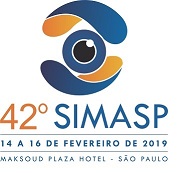Dados do Trabalho
Título
DIAGNOSIS OF TYPE 2 DIABETES WITH AUTOMATED PUPILOMETER SYSTEM BASED ON PUPIL CHROMATIC REFLEX
Introdução
To develop an automated pupilometry system (SAP) to diagnosis of type 2 diabetes based on the pupillary reflex.
Métodos
A pupilometer with a lighting system (0 to 250 lux) was used, positioned 3 cm away from one eye and external lighting sealing. While the RGB LED lighting system (R: 623 G: 517 B: 466) offers a solution for a pupil response, an infrared camera captures it as images. A camera (Point Gray Firefly MV 0.3 MP Mono USB 2.0) operates at a wavelength of 850 nm. To evaluate the direct pupil reflex, the pupilometer was used to record videos during stimuli with red wavelengths (623) and blue (466) wavelengths, with a luminance of 250 cd / m2 and 1 second of duration after the patient was adapted to the dark for 10 minutes. The interval between stimuli was of 59 seconds. After a data capture, a data processing phase, data return declaration and data normalization were applied. In the last phase, a learning machine algorithm, called Random Forest, was applied to create the classification model of patients. The patients were classified in groups: Group 1 – Without Type 2 Diabetes, Group 2 – with Typpe 2 Diabetes. All patients underwent complete ophthalmologic consultation and macular Cirrus HD-OCT. Thus, the patients were according to the diagnosis of the type2 diabetes based on the American Diabetes Association. The study was approved by the Institutional Review Board CAAE: 23723213.0.0000.5083. All patients signed a written informed consent form for this research.
Resultados
SAP was able to record, induce, and extract 96 pupil features. 31 volunteers were analyzed (16 in Group 1, 15 in Group 2), of which 22 were female volunteers (70.97%) and 9 were male volunteers (29.03%). A mean age of 60 year. As a result of the automated classification, Random Forest presented a result of 94.0% accuracy in the identification of diabetics type II was obtained.
Conclusões
The proposal proved to be promising, noninvasive, objective and portable method of identifying the Type 2 Diabetes. Finally, the work reveals that pupillary reflex.
Palavras Chave
Automated Pupillometry System; Diabetes mellitus type II; Computer vision
Arquivos
Área
Retina
Instituições
Fundação Banco de Olhos - Goiás - Brasil
Autores
Eduardo Nery Rossi Camilo, Augusto Paranhos Jr, Celso Gonçalves Camilo_Junior, Ronaldo M Costa, Cleyton R Silva, Nelson Rassi
